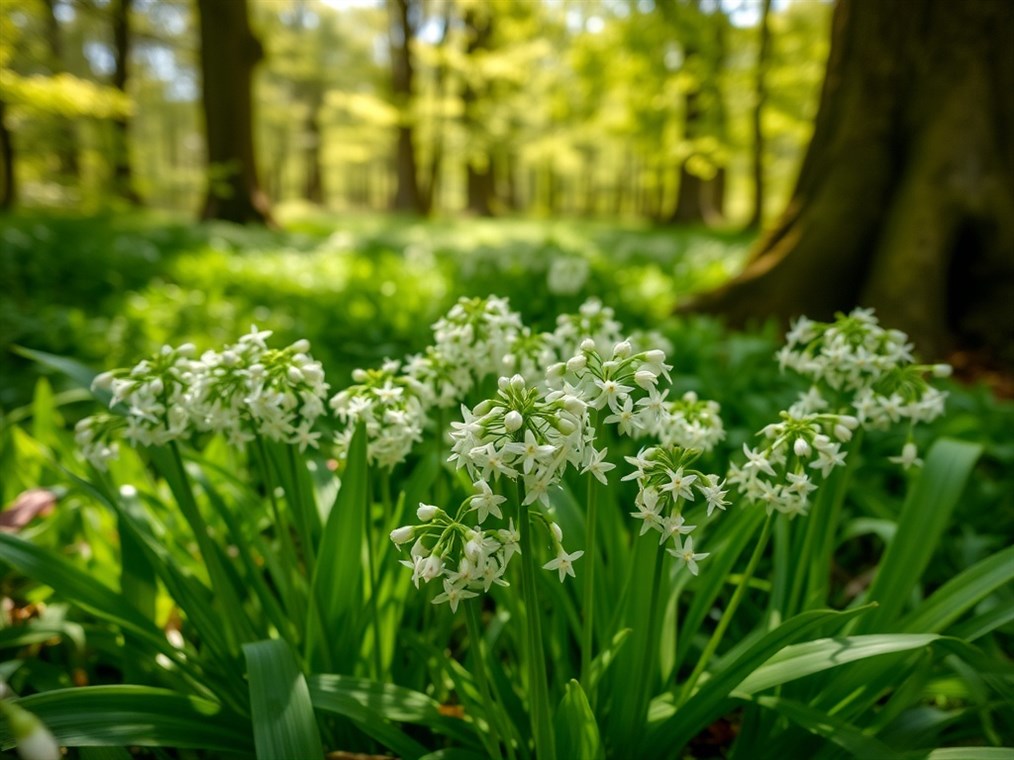Decoding the Delights: A Close Look at Wild Garlic Flowers
Ah, wild garlic! Allium ursinum if you want to get all scientific about it. But most of us know it as that wonderfully fragrant plant that pops up in woodlands each spring, a real sign that winter’s finally loosening its grip . You might also hear it called ramsons, bear’s garlic, or wood garlic, and it’s a close cousin to onions, leeks, and your everyday garlic . We mostly rave about its leaves for cooking, but those little wild garlic flowers? They’ve got their own story to tell, both in looks and what you can do with them . So, let’s dive into what makes them special.
Unveiling the Appearance of Wild Garlic Flowers
Come April, sometimes stretching into June, keep your eyes peeled! That’s when wild garlic throws its floral party, turning woodlands into a stunning mix of green and white . Here’s the lowdown on what to look for:
- Arrangement: Imagine a tiny, delicate umbrella made of flowers. That’s essentially what you’re seeing with the umbels, those rounded clusters where each flower hangs out – usually between half a dozen and twenty of them . They all sit pretty on top of a single, bare stalk, standing tall above the plant’s leaves .
- Structure: Each little flower is like a tiny star, six white petals all perfectly formed – botanists call them tepals, fancy that! And the stamens? They’re shorter than the petals, keeping things neat and tidy .
- Size: We’re talking small but perfectly formed. Each flower is maybe a centimeter and a half across, give or take . The whole cluster? Around 5 cm. A dainty delight!
- Scent: Here’s a giveaway – they smell like garlic! Just like the leaves, these flowers pack that distinctive aroma . You can’t miss it!
- Post-Flowering: Once the flowers have done their thing, you get these cute little green seedheads – some people call them ‘Ramson Berries’ . And get this, you can pickle them! A pretty cool substitute for capers, if you ask me.
Identifying Wild Garlic Through Its Flowers
Okay, so you want to be sure you’ve got the right plant, especially if you’re planning on munching on it. Identifying wild garlic is usually a doddle, thanks to a combo of what you see and what you smell.
- Habitat: Think damp, shady woodlands. That’s where wild garlic loves to hang out, especially near streams or rivers . It likes its soil moist and rich, and often forms these amazing carpets across the woodland floor. In fact, finding it often means you’re in a really old bit of woodland .
- Leaves: Keep an eye out for broad, pointy, oval leaves, a lovely bright green and smooth to the touch . They sprout from the base of the plant, and if you give them a little crush, boom! Garlic aroma .
- Scent Test: Seriously, this is your best friend. That unmistakable garlic smell is the key . Rub a leaf between your fingers, and if you get that garlicky punch, you’re golden . Word of warning, though – that smell sticks around, so it might confuse you later on!
- Flower Structure: Remember those umbrella-shaped clusters of tiny white stars? That’s what you’re looking for, held up high on their own little stalk .
Distinguishing Wild Garlic from Toxic Look-alikes
Right, let’s talk safety. While wild garlic is generally a piece of cake to identify, you need to watch out for some nasty customers that look a bit similar. Lily of the Valley (Convallaria majalis) and Autumn Crocus (Colchicum autumnale) are the usual suspects .
| Feature | Wild Garlic (Allium ursinum)

